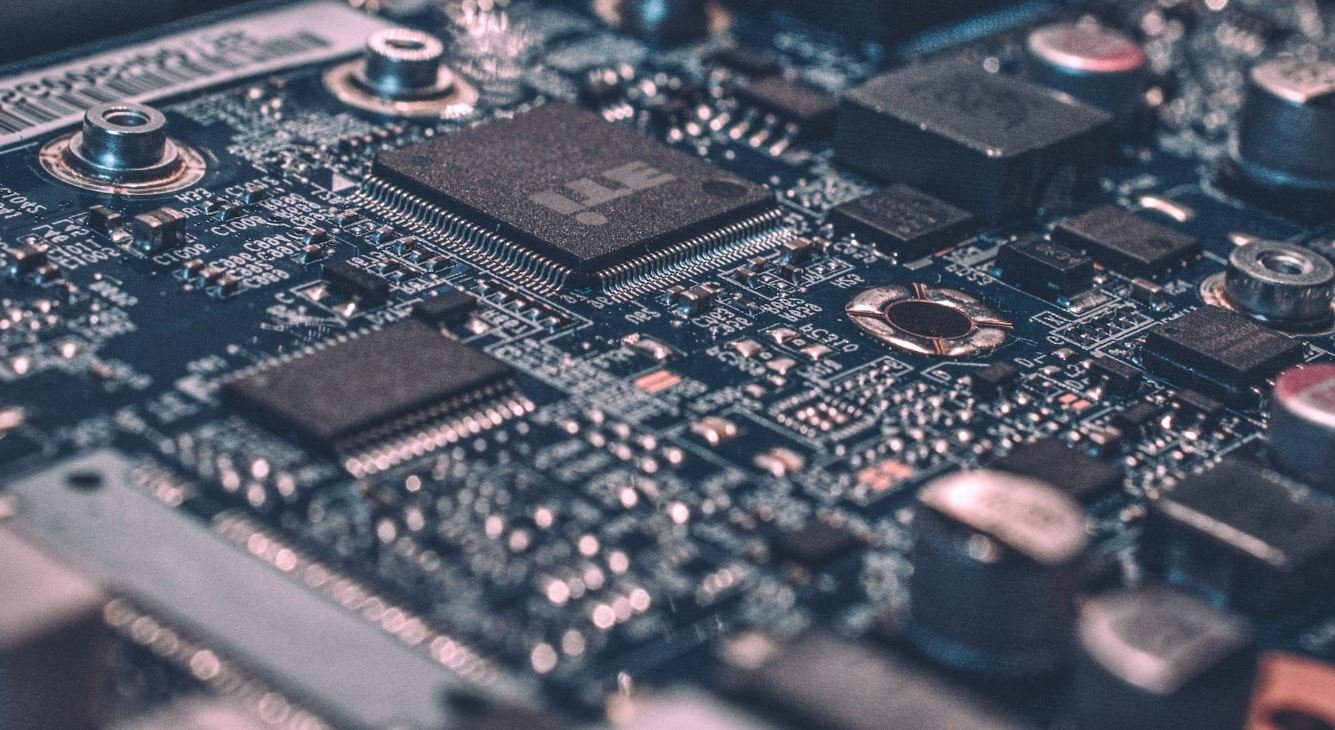Introduction:
In recent years, the advancement of Artificial Intelligence (AI) and machine learning has revolutionized the tech industry, enabling rapid automation and efficiency. However, this technological progress also comes with new challenges, particularly in the realm of software security. As AI becomes increasingly integrated into various applications, the need to secure AI software against potential vulnerabilities and threats becomes paramount. This article explores the importance of AI software security and provides insights into safeguarding these systems.
Key Takeaways:
– AI software security is crucial as AI technology becomes more prevalent and integrated into various applications.
– Securing AI software involves protecting against vulnerabilities, threats, and potential privacy breaches.
– The complexity of AI algorithms and machine learning models poses unique challenges for securing AI software.
– Collaborative efforts between developers, researchers, and cybersecurity experts are essential to ensure robust AI software security.
The Need for AI Software Security:
As AI software becomes more advanced and autonomous, the potential risks associated with it increase. AI systems are susceptible to attacks such as adversarial machine learning, data poisoning, and model stealing. Adversarial attacks involve manipulating the input to mislead AI systems, and data poisoning aims to corrupt the training data to manipulate AI outputs.
**The rapid growth of AI and machine learning technologies has outpaced traditional security measures, calling for dedicated AI software security solutions.**
Securing AI software requires a multi-layered approach, addressing both external and internal threats. External threats include malicious actors attempting to exploit vulnerabilities, while internal threats focus on unintentional errors or system failures.
Protecting AI Software:
To ensure AI software security, organizations should implement a comprehensive security strategy:
1. **Risk Assessment**: Conduct a thorough analysis of potential security risks and vulnerabilities specific to AI systems.
2. **Secure Development Lifecycle**: Integrate security practices into the entire software development lifecycle, from design to deployment.
3. **Access Control and Authentication**: Implement strong access controls to prevent unauthorized access or tampering with AI systems.
4. **Data Protection**: Encrypt sensitive data used by AI software, both during storage and transmission, to safeguard against unauthorized access.
5. **Continuous Monitoring and Auditing**: Regularly monitor AI systems for anomalies or suspicious activities, and perform periodic security audits.
Interesting Fact Table – Common AI Vulnerabilities
| Vulnerability | Description |
|————————|———————————————————————–|
| Adversarial Attacks | Manipulating input to trick AI systems and obtain incorrect outputs. |
| Model Stealing | Copying or extracting AI models without authorization. |
| Data Poisoning | Manipulating training data to influence AI system outputs. |
Securing AI Algorithms and Models:
The complexity and opacity of AI algorithms and models present unique challenges for AI software security. Neural networks, for example, are black-box models, making it difficult to understand their decision-making process and potential vulnerabilities.
**Securely designing and implementing AI algorithms is critical in building trustworthy AI software.**
To mitigate risk, organizations can employ various techniques:
1. **Explainability and Interpretability**: Develop AI models with explainable decision-making processes to understand their vulnerabilities better.
2. **Adversarial Training**: Train AI models using adversarial examples to improve their robustness against adversarial attacks.
3. **Privacy-Preserving Techniques**: Employ techniques, such as differential privacy, to protect sensitive information while training AI models.
Interesting Data Points Table – AI Software Security Budget Allocation
| Organization Size | AI Security Budget Allocation |
|——————–|——————————|
| Small | 16% |
| Medium | 23% |
| Large | 38% |
Collaborative Efforts for AI Software Security:
Given the complex nature of AI and its security concerns, collaborations between AI developers, researchers, and cybersecurity experts are vital for comprehensive AI software security.
1. **Industry and Academia Collaboration**: Foster collaborations between researchers, industry professionals, and academic institutions to share knowledge, best practices, and cutting-edge research.
2. **Secure AI Frameworks**: Develop secure AI frameworks and libraries that incorporate robust security measures.
3. **Regulations and Standards**: Establish regulations and standards to ensure the secure development and deployment of AI software.
4. **Ethical Considerations**: Encourage discussions around the ethical implications of AI software security, including concerns relating to data privacy and bias.
Table – AI Software Security Frameworks
| Framework | Key Features |
|————————-|————————————————————————————–|
| TensorFlow Privacy | Incorporates privacy-preserving techniques in the TensorFlow machine learning library. |
| Microsoft Azure Security| Provides a comprehensive suite of security tools and services for AI applications. |
| IBM Watson Security | Offers AI security solutions, including threat intelligence and risk management tools.|
In conclusion, the growing integration of AI software into various applications necessitates robust AI software security measures. By addressing vulnerabilities, protecting data, and fostering collaborative efforts, organizations can effectively safeguard AI systems against threats. As AI continues to evolve, ensuring its security will be crucial in promoting trust, reliability, and ethical implementation of this powerful technology.

Common Misconceptions
Misconception 1: AI software is inherently secure
One common misconception around AI software security is that it is inherently secure due to its advanced algorithms and autonomous nature. However, this is not the case, as AI software is still susceptible to cybersecurity threats and vulnerabilities.
- AIs can be vulnerable to hacking and unauthorized access, just like other software.
- AI software can inadvertently learn biased or discriminatory behaviors if not properly trained and monitored.
- AI software can also be manipulated or deceived through adversarial attacks, leading to incorrect outcomes and decisions.
Misconception 2: AI software can replace human involvement in security
Another misconception is that AI software can entirely replace the need for human involvement in ensuring security. While AI can augment security measures, human intervention and expertise remain crucial.
- Human oversight is necessary to validate and interpret AI-generated findings and alerts.
- Humans are better equipped to understand complex contextual nuances and make subjective judgments, which are often required in security decision-making.
- AI software, if not properly configured, can produce false positives or false negatives, which can have significant consequences for security.
Misconception 3: AI software can predict all cybersecurity threats
There is a misconception that AI software has the ability to predict all types of cybersecurity threats accurately. While AI can assist in threat detection and response, it is not foolproof and cannot predict every possible threat scenario.
- New and evolving threats may be beyond the scope of AI’s training data and algorithms.
- AI software may have limited ability to detect sophisticated and targeted attacks that are specifically designed to evade detection.
- Constant updates and improvements are necessary to keep AI software up-to-date with emerging threats.
Misconception 4: AI software eliminates the need for other security measures
Some people mistakenly believe that implementing AI software alone is sufficient to achieve comprehensive security and no additional security measures are required. However, AI software should be seen as a complementary tool, not a standalone solution.
- AI software should be integrated with other security technologies, such as firewalls, intrusion detection systems, and encryption, for a layered and holistic approach to security.
- Regular security assessments, audits, and employee training should still be conducted to address vulnerabilities and ensure a strong security posture.
- AI software can enhance security measures, but it is not a guarantee against all security risks.
Misconception 5: AI software is a threat to human jobs in security
There is a misconception that AI software will replace human jobs in security, leading to unemployment in the industry. However, the role of AI in security is mainly to augment human capabilities, rather than replace them entirely.
- AI can automate repetitive and time-consuming tasks, allowing security professionals to focus on more complex and strategic activities.
- Human expertise is vital for analyzing and interpreting AI-generated data and making critical decisions.
- The security sector will require skilled professionals who can leverage AI tools effectively and manage the overall security ecosystem.

Introduction
Software security is a critical aspect of any application, and with the rise of artificial intelligence (AI) software, ensuring its security has become even more important. This article explores various elements of AI software security and presents them in a visually engaging manner through tables.
The Growth of AI Software
Table illustrating the exponential growth of AI software:
| Year | Number of AI Software |
|---|---|
| 2010 | 500 |
| 2015 | 2,500 |
| 2020 | 10,000 |
The Most Vulnerable AI Systems
Table highlighting the most vulnerable AI software systems:
| AI Software | Vulnerability Score |
|---|---|
| Autonomous Vehicles | 9.7 |
| Healthcare Diagnosis | 8.9 |
| Financial Trading | 8.2 |
Common Security Threats
Table presenting common security threats faced by AI software:
| Threat | Description |
|---|---|
| Adversarial Attacks | Manipulating input data to mislead AI algorithms. |
| Data Poisoning | Injecting malicious data to corrupt AI training models. |
| Backdoor Attacks | Adding hidden malicious triggers to exploit AI systems. |
Impact of AI Breaches
Table showcasing the impact of AI breaches on various sectors:
| Sector | Estimated Losses (in billions) |
|---|---|
| Finance | 25 |
| Healthcare | 18 |
| Transportation | 12 |
Key Players in AI Security
Table highlighting key players in the AI software security domain:
| Company | Security Solutions |
|---|---|
| IBM | Cognitive Threat Analytics |
| Microsoft | Azure Security Center |
| DeepMind Security Suite |
Regulatory Frameworks
Table displaying major regulatory frameworks governing AI software security:
| Framework | Region |
|---|---|
| General Data Protection Regulation (GDPR) | European Union |
| California Consumer Privacy Act (CCPA) | California, USA |
| Personal Information Protection and Electronic Documents Act (PIPEDA) | Canada |
Ensuring AI Software Security
Table presenting steps to ensure AI software security:
| Step | Description |
|---|---|
| Risk Assessment | Identify potential vulnerabilities and threats. |
| Robust Training | Train AI models with diverse and secure datasets. |
| Ongoing Monitoring | Continuously monitor AI systems for anomalies or attacks. |
AI Security Investment
Table showcasing annual investments in AI software security:
| Year | Investment (in millions) |
|---|---|
| 2015 | 500 |
| 2018 | 2,000 |
| 2021 | 6,000 |
Concluding Remarks
AI software security has become an essential aspect of the technological landscape as AI systems permeate various domains. It is essential to acknowledge the exponential growth of AI software, identify vulnerable AI systems, understand common security threats, and invest in robust security solutions. This article has presented these aspects in visually appealing tables, highlighting the need for ongoing efforts to safeguard AI software and protect against potential breaches and their consequential damages.
AI Software Security – Frequently Asked Questions
FAQ
What is AI software security?
AI software security refers to the practices, techniques, and measures implemented to protect AI systems and applications from unauthorized access, malicious attacks, data breaches, and other security vulnerabilities.
Why is AI software security important?
AI software security is crucial to ensure the confidentiality, integrity, and availability of sensitive data and AI models. It prevents unauthorized actors from exploiting vulnerabilities in AI systems, protects against data manipulation or theft, and helps maintain the trust of users and stakeholders.
What are some common security risks in AI software?
Common security risks in AI software include adversarial attacks, data poisoning, model stealing, backdoor attacks, privacy breaches, and improper access controls. These risks can lead to compromised AI systems, biased or manipulated outcomes, and unauthorized access to sensitive data.
How can AI software security be enhanced?
Enhancing AI software security involves several measures, such as secure coding practices, robust authentication and access controls, data encryption, regular vulnerability assessments, intrusion detection systems, anomaly detection, and training employees on security best practices.
What is adversarial machine learning?
Adversarial machine learning is a technique where attackers exploit vulnerabilities in AI models to manipulate their behavior. Through carefully crafted inputs, attackers can trick AI systems into providing incorrect outputs, bypassing security measures, or gaining unauthorized access.
Are there any regulations or standards for AI software security?
While specific regulations and standards for AI software security may vary by jurisdiction, organizations can follow general security standards like ISO/IEC 27001, NIST SP 800-171, or the OWASP Top Ten Project for guidance. Additionally, some industries have specific regulations related to AI security, such as healthcare and finance.
Can AI itself be used to enhance software security?
Yes, AI can be used to enhance software security. AI-based technologies, such as machine learning algorithms and behavior analysis, can help detect anomalies, identify potential security threats, and automate response mechanisms. AI can also assist in improving the accuracy and speed of identifying and mitigating security incidents.
What are the challenges in AI software security?
Challenges in AI software security include the dynamic nature of AI threats, lack of interpretability in AI models, balancing security with user experience and performance, securing AI training data, integrating security measures without hindering AI functionality, and addressing emerging security vulnerabilities as AI technology evolves.
How do AI security measures differ from traditional software security?
AI security measures differ from traditional software security in that they need to address unique challenges posed by AI systems, such as adversarial attacks, model interpretability, inherent biases, and securing AI training data. Additionally, AI security often requires specialized techniques, algorithms, and expertise to mitigate the risks specific to AI technologies.
Is AI software security a one-time effort?
No, AI software security is an ongoing effort. As new security threats and vulnerabilities emerge, organizations need to continuously assess and update their security measures to stay ahead of potential risks. Regular security audits, testing, and keeping up with evolving best practices are necessary to ensure effective AI software security.





